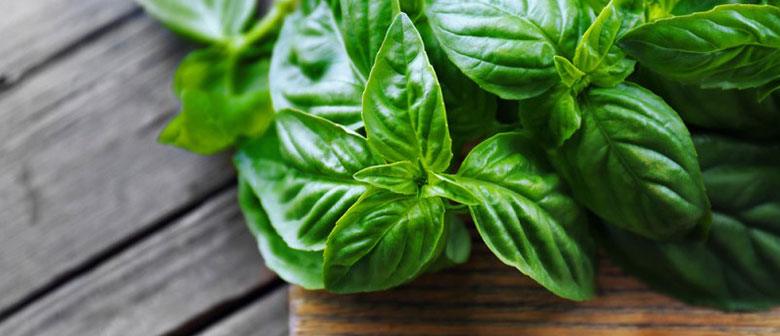Summer Herb Growing Guide
Summer herb growing guide. Whether you’re sick of paying $3 for a handful of your favourite herb from your local supermarket, want mint for mojitos or basil to make a killer pesto, we have your easy guide to growing summer herbs. Although different herbs have different needs, growing your own is easy!
The herb basics
- Make sure your herbs are placed in a spot that meets their needs. Don’t place a sun loving herb in a shady spot, and don’t place a damp dweller in a dry area, as they will struggle
- Choose a spot that is close to your kitchen, be it a sunny windowsill inside, or pots or hanging baskets on the patio
- Give your herbs a regular trim as this not only ensures that the plant doesn’t grow wildly out of control, but that you will get a continuous supply of new leaves
- Although herbs look pretty when they flower, nip off the heads so that you get a continuous leaf supply.
Basil
The summertime staple, with it’s warm flavour, basil is a herb that works well in sweet or mild recipes. Basil needs warmth and regular watering to flourish. It is happy to be raised in a pot on the kitchen bench or windowsill, however you should water from the bottom by popping it in a saucer because basil likes it’s soil to be moist and well-drained. If you’re planning on planting your basil outside, make sure you wait until the soil has warmed up otherwise it may struggle to grow. Basil is an ideal companion for tomatoes, it improves the taste of both plants and also repels insects.
Best used in: pesto
Coriander
A staple in Asian and Mexican cuisines. Coriander does like sun, so plant in free-draining soil, placing on a windowsill or conservatory is ideal, however it does have deep roots so a large pot is required. Coriander should be planted when the weather is steady as it is known to go to seed in hot conditions, however this isn’t all bad as the seeds are great for seasoning exotic dishes.
Best used in: Asian and Mexican dishes
Mint
If you’re new to herb growing, mint is the perfect place to start. Mint grows best in rich, moist soil in partial shade. When choosing a location, opt for one where the plant will receive morning sun and partial afternoon shade. Mint has little underground runners which explains why it often pops up throughout the garden. To keep it contained, plant it in a pot or container. If you’re adding mint to your garden and don’t want it to take over, you can submerge it in a pot or container (around 30cm in diameter) and add to your garden as normal, you can also apply mulch to help contain it.
Harvest mint springs before they flower, if you want to extend your mint season, pinch off the little flowering buds as they appear.
Best used in: anything from summer drinks, tabbouleh to fruit salads.
Parsley
A perfect garnish that is so good for you, rich in iron, and vitamins A and C.
To ensure the best growth outdoors, make sure the soil is warm. Parsley loves rich, moist soil and needs plenty of feeding and regular watering to produce its lovely lush leaves. Allowing your parsley to get too dry may cause it to go to seed. Planting parsley in areas with full sun to partial shade is recommended.
Although parsley is best used fresh, if you have an abundance of growth you can pop it in the freezer instead of drying it, as it will retain its flavour better.
Best used in: salads, sauces and soups – it lessens the need for salt.
Rosemary
The aromatic and resonant flavour of rosemary makes it a delightful pairing to your summertime cuisine. Rosemary is a great choice for planting in pots or containers, however do not let it dry out, and water evenly throughout the season. If you’re planting outside, make sure that the soil is warm.
There are so many varieties of rosemary, all with different uses. If you want to add some drama to your garden, the trailing varieties are best, however if your motives are purely taste driven, opt for the upright varieties. After the plant flowers, trim it back and make sure to prune regularly to avoid a lanky looking plant.
Best used in: seasoning poultry, lamb and roast vegetables.





